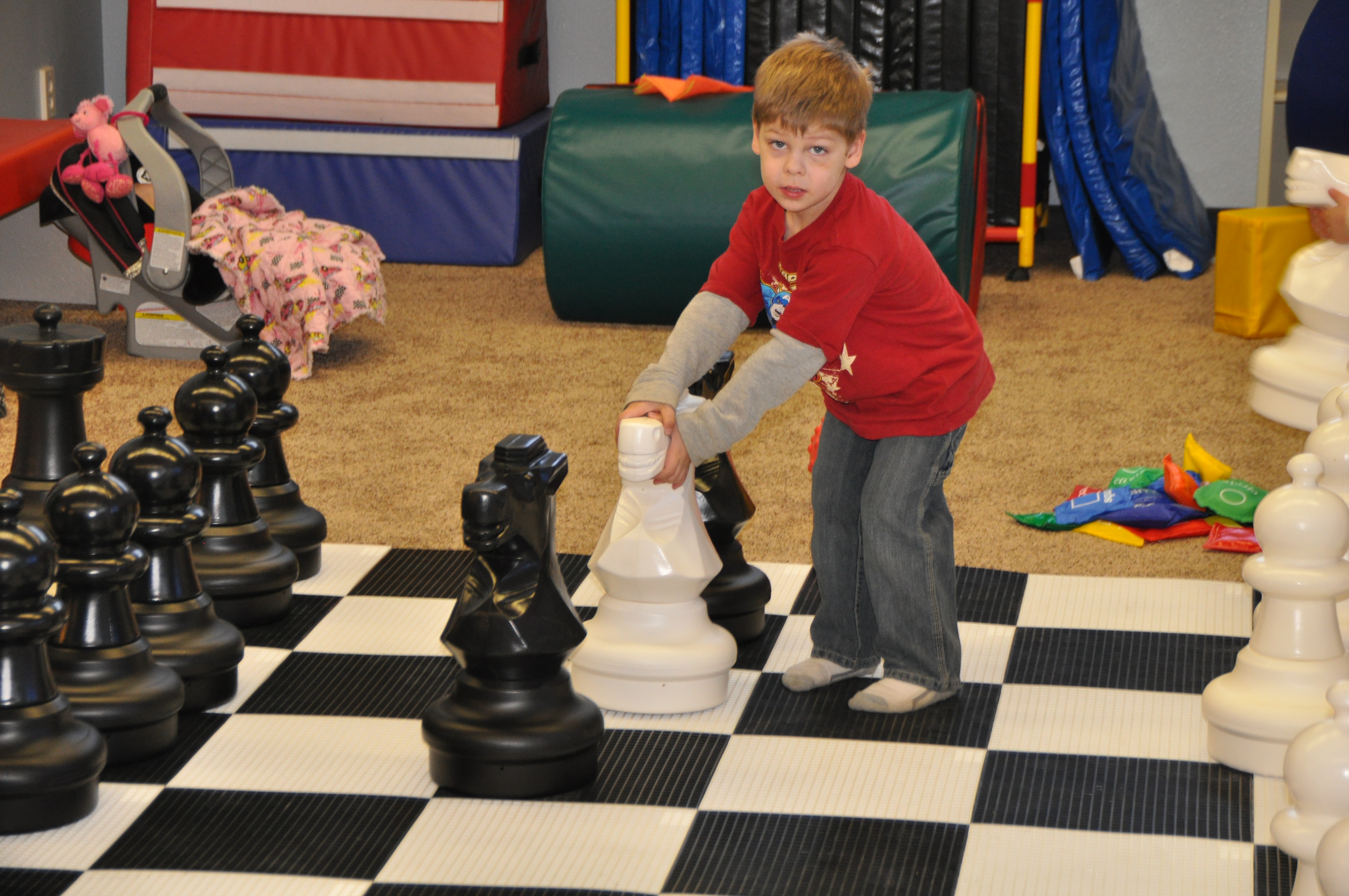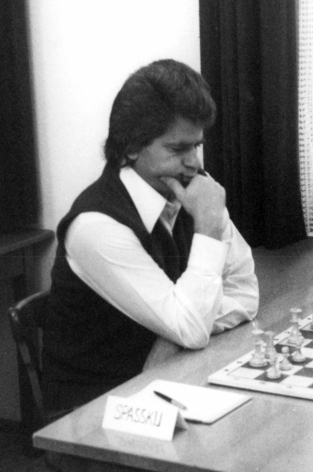|
Touch-move Rule
The touch-move rule in chess specifies that a player, having the move, who deliberately touches a piece on the board must move or capture that piece if it is legal to do so. If it is the player's piece that was touched, it must be moved if the piece has a legal move. If the opponent's piece was touched, it must be captured if it can be captured with a legal move. If the touched piece cannot be legally moved or captured, there is no penalty. This is a rule of chess that is enforced in all formal competitions. A player claiming a touch-move violation must do so before themselves touching a piece. A player who wants to adjust a piece on its square without being required to move it can announce the French ''j'adoube'' ("I adjust") before touching the piece. While ''j'adoube'' is internationally understood, a local language equivalent such as "adjusting" is usually acceptable. A player may not touch the pieces on the board during the opponent's turn. There is a separate rule tha ... [...More Info...] [...Related Items...] OR: [Wikipedia] [Google] [Baidu] |
Alexander Chernin
Alexander Mikhailovich Chernin (; born 6 March 1960) is a Soviet-born Hungarian chess grandmaster and trainer. Tournaments and championships Born in Kharkiv, Ukrainian SSR, as a youth he frequently succeeded in tournaments and climbed rapidly through the junior rankings to participate at the very highest level. At Skien in 1979, he entered the World Junior Championship and finished runner-up to Yasser Seirawan. A short while later (January 1980), he played in the European Junior Championship at Groningen and won the event (ahead of Zurab Azmaiparashvili). These prestigious successes soon led him to an International Master title and more importantly, laid the foundation stones for his continued development over the next few years. There were many tournament victories, either outright or shared, including Irkutsk 1980, Copenhagen 1984 (and 1986 with Vasily Smyslov), Stary Smokovec 1984, Polanica-Zdrój (Rubinstein Memorial) 1988 (with Alexander Goldin), Prague 1989 and Marsei ... [...More Info...] [...Related Items...] OR: [Wikipedia] [Google] [Baidu] |
Anatoly Karpov
Anatoly Yevgenyevich Karpov (, ; born May 23, 1951) is a Russian and former Soviet Grandmaster (chess), chess grandmaster, former World Chess Championship, World Chess Champion, and politician. He was the 12th World Chess Champion from 1975 to 1985, a three-time FIDE World Champion (1993, 1996, 1998), twice World Chess champion as a member of the USSR team (1985, 1989), and a six-time winner of Chess Olympiad, Chess Olympiads as a member of the USSR team (1972, 1974, 1980, 1982, 1986, 1988). The International Association of Chess Press awarded him nine Chess Oscars (1973–77, 1979, 1980, 1981, 1984). Karpov's chess tournament successes include over 160 first-place finishes. He had a peak Elo rating system, Elo rating of 2780, and his 102 total months world number one is the third-longest of all time, behind Magnus Carlsen and Garry Kasparov. Karpov is also an elected Member of the State Duma in Russia. Since 2006, he has chaired the Commission for Ecological Safety and Envir ... [...More Info...] [...Related Items...] OR: [Wikipedia] [Google] [Baidu] |
Fast Chess
Fast chess, also known as speed chess, is a type of chess in which each player is given less time than classical chess time controls allow. Fast chess is subdivided, by decreasing time controls, into rapid chess, blitz chess, and bullet chess. Armageddon chess is a variant of fast chess with draw odds for black and unequal time controls, used as a tiebreaker of last resort. As of January 2025, the top-ranked rapid chess player and the top-ranked blitz chess player in the open section is Magnus Carlsen from Norway, who is also the top-ranked classical chess player. The reigning World Rapid Chess Champion is Volodar Murzin of Russia. The reigning World Blitz Chess Champions are Magnus Carlsen and Ian Nepomniachtchi of Russia (who shared victory in 2024). As of January 2025, Ju Wenjun of China is the women's top-ranked rapid player, who is also the reigning Women's World Chess Champion in classical chess and the reigning Women's World Blitz Chess Champion. The women's top- ... [...More Info...] [...Related Items...] OR: [Wikipedia] [Google] [Baidu] |
Resign (chess)
The rules of chess (also known as the laws of chess) govern the play of the game of chess. Chess is a two-player abstract strategy board game. Each player controls sixteen pieces of six types on a chessboard. Each type of piece moves in a distinct way. The object of the game is to checkmate the opponent's king; checkmate occurs when a king is threatened with capture and has no escape. A game can end in various ways besides checkmate: a player can resign, and there are several ways a game can end in a draw. While the exact origins of chess are unclear, modern rules first took form during the Middle Ages. The rules continued to be slightly modified until the early 19th century, when they reached essentially their current form. The rules also varied somewhat from region to region. Today, the standard rules are set by FIDE (Fédération Internationale des Échecs), the international governing body for chess. Slight modifications are made by some national organizations for their ... [...More Info...] [...Related Items...] OR: [Wikipedia] [Google] [Baidu] |
Pin (chess)
In chess, a pin is a tactic in which a defending piece cannot move out of an attacking piece's line of attack without exposing a more valuable defending piece. Moving the attacking piece to effect the pin is called ''pinning''; the defending piece restricted by the pin is described as ''pinned''. Only a piece that can move any number of squares along a horizontal, vertical, or diagonal line (i.e. a bishop, rook, or queen) can pin. Any piece can be pinned except the king. The pin is one of the most powerful chess tactics. The inverse of a pin is a ''skewer'', in which a more valuable piece under direct attack may move to expose a less valuable piece to an attack. Types Absolute pin An ''absolute pin'' is one where the piece shielded by the pinned piece is the king. In this case it is illegal to move the pinned piece out of the line of attack, as that would place one's king in check (see diagram). A piece pinned in this way can still give check or defend another piece fr ... [...More Info...] [...Related Items...] OR: [Wikipedia] [Google] [Baidu] |
Wolfgang Unzicker
Wolfgang Unzicker (26 June 1925 – 20 April 2006) was one of the strongest German chess Grandmasters from 1945 to about 1970. He decided against making chess his profession, choosing law instead. Unzicker was at times the world's strongest amateur chess player, and World Champion Anatoly Karpov called him the "world champion of amateurs". Biography Unzicker was born in Pirmasens, a small town near Kaiserslautern in the province of Rhineland-Palatinate noted for shoemaking. His father taught him how to play chess at age 10. His brother, four years older, was also a chess player but was killed in World War II. Unzicker began to play tournaments abroad in 1948 as Germany was struggling to rebuild after the war, and achieved the grandmaster title in 1954. He won the German Championship six times from 1948 to 1963 and tied for first in 1965. From 1950 to 1978 Unzicker played in twelve Chess Olympiads, and was first board on ten of them. He played nearly 400 times representing Ge ... [...More Info...] [...Related Items...] OR: [Wikipedia] [Google] [Baidu] |
Piatigorsky Cup
The Piatigorsky Cup was a triennial series of double round-robin tournament, round-robin grandmaster (chess), grandmaster chess tournaments held in the United States in the 1960s. Sponsored by the Piatigorsky Foundation, only two events were held, in 1963 and 1966. The Piatigorsky Cups were the strongest U.S. chess tournaments since New York 1927 chess tournament, New York 1927. Jacqueline Piatigorsky (née Rothschild) was married to cellist Gregor Piatigorsky. One of the strongest woman chess players in the U.S. and a regular competitor in the U.S. Women's Chess Championship, she designed the cup and was the primary organizer of the tournament. The prize funds were among the largest of any chess tournament up to that time. Every player was guaranteed a prize and all traveling and living expenses were paid. Los Angeles 1963 The First Piatigorsky Cup was held in Ambassador Hotel (Los Angeles), The Ambassador Hotel, Los Angeles in July 1963. The tournament field of eight includ ... [...More Info...] [...Related Items...] OR: [Wikipedia] [Google] [Baidu] |
Boris Spassky
Boris Vasilyevich Spassky (; January 30, 1937 – February 27, 2025) was a Russian chess grandmaster who was the tenth World Chess Champion, holding the title from 1969 to 1972. Spassky played three world championship matches: he lost to Tigran Petrosian in World Chess Championship 1966, 1966; defeated Petrosian in World Chess Championship 1969, 1969 to become world champion; then lost to Bobby Fischer in a famous match in World Chess Championship 1972, 1972. Spassky won the Soviet Chess Championship twice outright (1961 USSR Chess Championship (29th), 1961, 1973 USSR Chess Championship, 1973), and twice lost in playoffs (1956 USSR Chess Championship, 1956, 1963 USSR Chess Championship, 1963), after tying for first place during the event proper. He was a Candidates Tournament, World Chess Championship candidate on seven occasions (Candidates Tournament 1956, 1956, Candidates Matches 1965, 1965, Candidates Matches 1968, 1968, Candidates Matches 1974, 1974, Candidates Matches 197 ... [...More Info...] [...Related Items...] OR: [Wikipedia] [Google] [Baidu] |
Draw By Agreement
A game of chess can end in a draw by agreement. A player may offer a draw at any stage of a game; if the opponent accepts, the game is a draw. In some competitions, draws by agreement are restricted; for example draw offers may be subject to the discretion of the arbiter, or may be forbidden before move 30 or 40, or even forbidden altogether. The majority of draws in chess are by agreement. Under FIDE rules, a draw should be offered after making the move and before pressing the clock, then marked in the scoresheet as ''(=)''. However, draw offers made at any time are valid. If a player offers a draw before making a move, the opponent has the option of requesting a move before deciding whether or not to accept the offer. Once made, a draw offer cannot be retracted and is valid until rejected. A player may offer a draw by asking, "Would you like a draw?", or similar; the French word ''remis'' (literally "reset") is internationally understood as a draw offer and may be used if the p ... [...More Info...] [...Related Items...] OR: [Wikipedia] [Google] [Baidu] |
Queen (chess)
The queen (♕, ♛) is the most powerful piece in the game of chess. It can move any number of squares vertically, horizontally or , combining the powers of the rook and bishop. Each player starts the game with one queen, placed in the middle of the first next to the king. Because the queen is the strongest piece, a pawn is promoted to a queen in the vast majority of cases; if a pawn is promoted to a piece other than a queen, it is an underpromotion. The predecessor to the queen is the '' ferz'', a weak piece only able to move or capture one step diagonally, originating from the Persian game of shatranj. The queen acquired its modern move in Spain in the 15th century. Placement and movement The white queen starts on d1, while the black queen starts on d8. With the chessboard oriented correctly, the white queen starts on a white square and the black queen starts on a black square—thus the mnemonics "queen gets her color", "queen on er wncolor", or "the dress uee ... [...More Info...] [...Related Items...] OR: [Wikipedia] [Google] [Baidu] |





